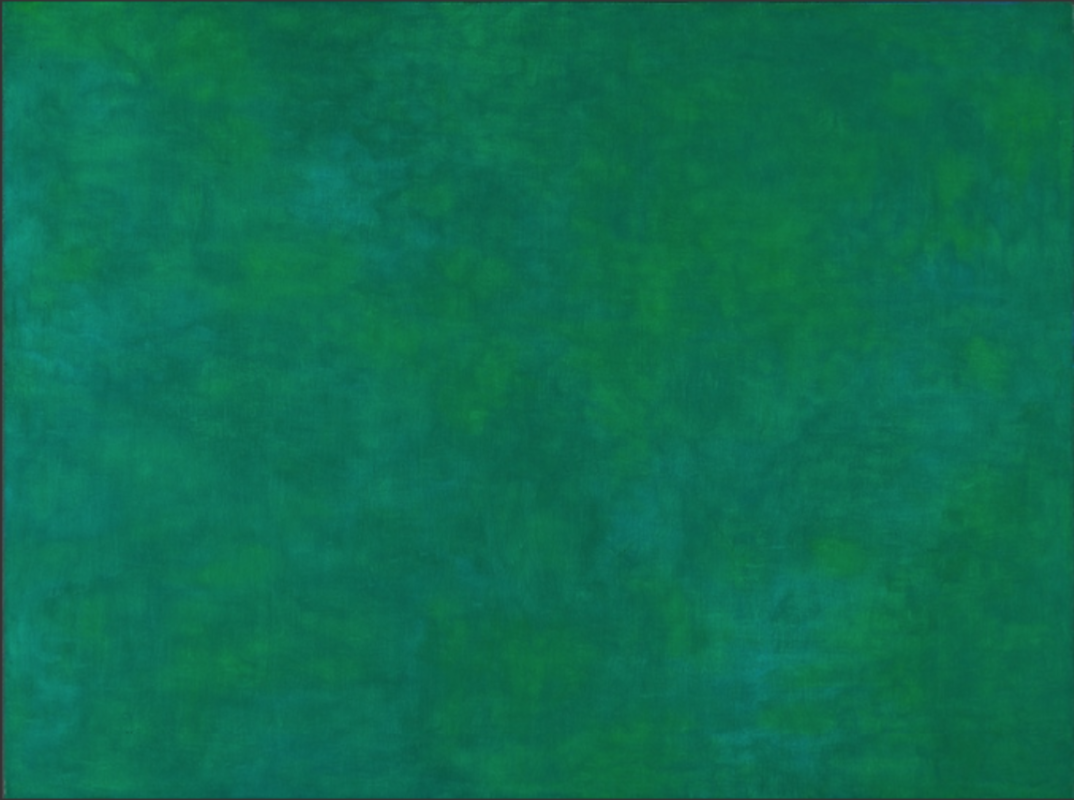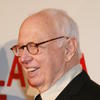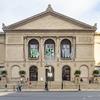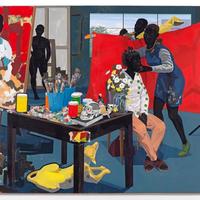More about Tableau Vert

Contributor
Listen, if you’ve been to any museum ever in your life, you’ve probably uttered the words “I could do that” a few times as you glanced at a painting hanging on the wall.
You might be doing it now. But look, art is incredibly subjective, and sometimes things go so much deeper than the surface of a painting. That’s the case for Ellsworth Kelly’s Tableau Vert.
It’s well documented that art imitates life, and vice versa. But sometimes art imitates other art. Most movies at the theater today are an adaptation of some sort. And the songs on the radio sample and cover the OG versions nonstop. Sometimes this can be seen as lazy, but it can also be an artist’s way to pay homage to another work of art by creating something similar through their own unique prism.
To understand why Tableau Vert is such a standout in Kelly’s catalogue of work, we gotta go back and look at the type of artist he was initially. Kelly had a simple approach to his art. He saw things exactly as they were, painting the world just as he saw it. As a young artist, that was reflected in his naturalistic style. A crooked stoop here, a hyper realistic self-portrait there. But everything changed when he went to Paris in his mid-twenties. While there, he studied a number of Claude Monet’s unsold works at his garden at Giverny. And soon after, Kelly painted Tableau Vert. It was an immediate inspiration, and a clear departure from what he’d painted in his life to this point. But even though this was a turning point in his style, he was still painting what he saw. It was how he saw things that was beginning to change.
For instance, Tableau Vert is a monochrome, which means it was painted using only one hue. Its purpose can be used to convey simple themes such as tranquility, calmness, or even something negative like turmoil. A monochrome is really an exploration in emotion and energy. That’s why it could be hard to interpret what it means or what it’s saying if you aren’t used to it. Kelly could have painted something much more literal after visiting Monet’s old crib, but that wouldn’t have stayed true to the effect that the paintings had on him. He saw something less concrete, and more abstract. So that’s what he painted. And from this point forward, how he saw the world would drastically change, all while being reflected in everything he did.
“Everywhere I looked, everything I saw became something to be made, and it had to be made exactly as it was.” Kelly explains in "Ellsworth Kelly: Catalogue Raisonné of Paintings, Reliefs, and Sculpture, Volume One, 1940-1953." What’s crazy is that after Tableau Vert, Kelly began to mimic all forms of art that interested him. In a sort of illustrative transcription, he’d filter aspects of everything and create his own version of it. This allowed him to create art that was wholly inspired, but completely original in the same vein. To use the music analogy again, something that makes or breaks a good sample in a song is the amount it’s used and where it’s placed. Songs that just rip choruses from other versions can come off as uninspired, but when a song takes the structure, or a small little snippet from an old song, and uses it as one piece of the foundation of a new one, that’s when it feels like it’s breathing new life into the old version. That’s what Kelly did. He was a master artistic sampler. And I guess most artists are when you look at it that way, but Kelly was someone who pushed for people to see things in their own way. It wasn’t the fact that he adopted practices and styles from other artists that made him so special, it was how he adopted those things, and how they changed through the filter of his mind. So next time you see a work of art in a museum that isn’t jumping out at you as something that descended from the heavens, remember that things go much deeper than your immediate reaction to them. And oftentimes, the 'why' can be more important than the 'how.'
Sources
- Boddy-Evans, Marion. “Art Glossary: Monochrome Painting.” Thought Co. April 30, 2018. https://www.thoughtco.com/definition-of-monochrome-painting-2577645
- Keane, Tim. “Exactly As It Was: Ellsworth Kelly’s Basic Training:. Hyperallergic. January 30, 2016. https://hyperallergic.com/271206/exactly-as-it-was-ellsworth-kellys-bas…
- Pes, Javier. “How Impressionism Became Expressionism: A New Exhibition Traces Claude Monet’s Influence on the New York School.” Artnet. April 13, 2018. https://news.artnet.com/exhibitions/was-claude-monet-the-grandfather-of… ssionism-12647












